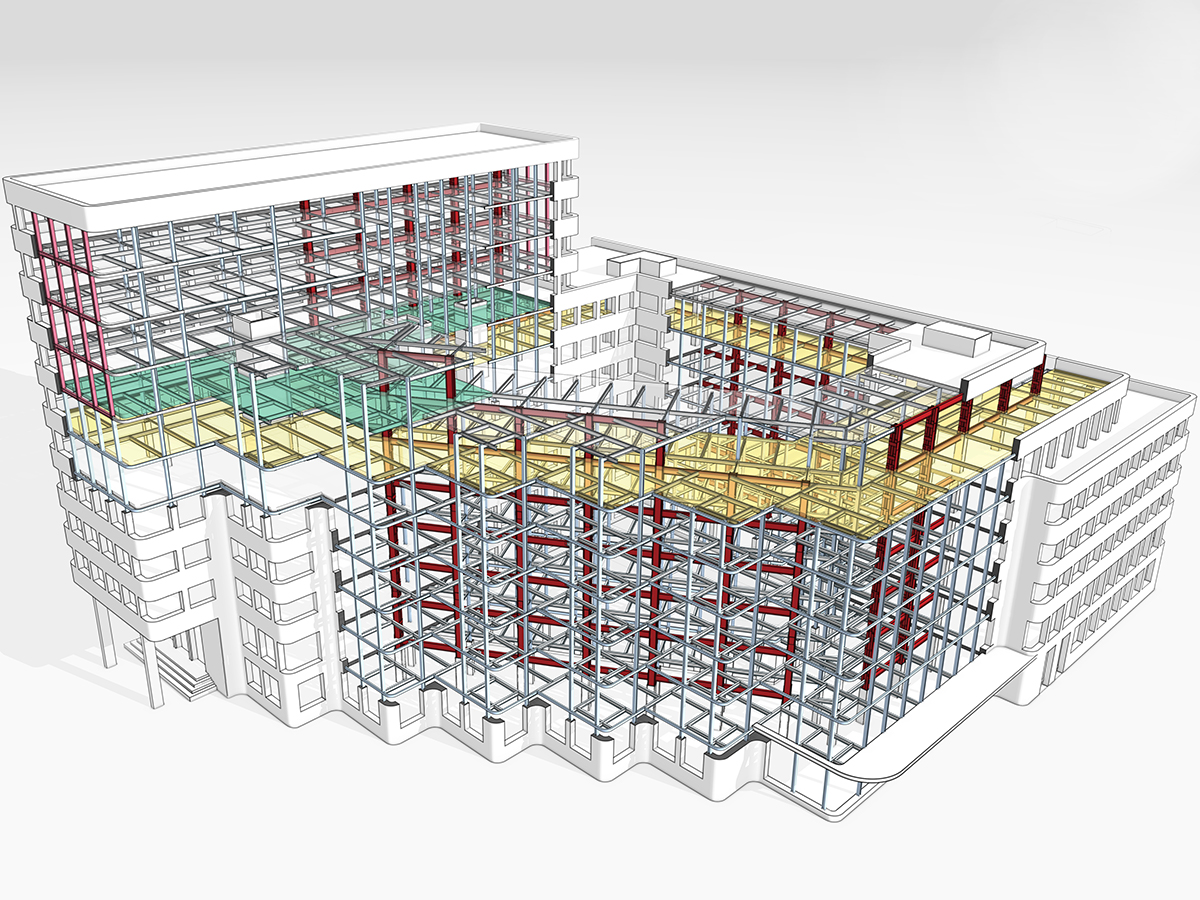One Year DFG Priority Program 2255 »Cultural Heritage Construction«
How should and can we deal with the structural engineering legacy of high modernity? How can we grasp and understand the rapid development of engineering structures between 1880 and 1970 in terms of building technology history? How do we recognize the values of this recent heritage, which often extend far beyond the structural, and above all - what preservation and engineering strategies and methods can be developed for its preservation and continuation?
In spring 2019, the DFG Senate approved the establishment of the Priority Program (SPP) 2255 "Cultural Heritage Construction - Foundations of an Engineering-based and Networked Conservation of the Architectural Heritage of the High Modern Age" proposed by a group led by Prof. Dr.-Ing. Werner Lorenz (see news item dated June 17, 2019). As an interdisciplinary joint project, it is dedicated for the first time comprehensively to the history, the monument conservation assessment as well as the challenges for a sustainable preservation of the structural heritage of high modernism.
Subprojects and coordination
The call for proposals for the first, three-year program phase of SPP 2255 already attracted an extraordinary amount of interest. No fewer than 36 proposals for subprojects were received by the DFG. In view of the limited funding volume of €7.5 million, unfortunately only eleven of these proposals received a positive decision in the summer of 2020. However, since interdisciplinary teams had already come together for almost all of the subprojects, 26 research projects, some of which are closely interlinked, are now actually working in the SPP 2255 network with a total of around 70 participants at 19 different research institutions in Germany and Austria.
In terms of content, the projects cover a wide range of topics, from engineering structures such as railroad bridges or hall buildings to specific state-of-the-art methods and building materials in serial prefabrication to presentation and test models. The methodological span ranges from historical-empirical approaches to material-related approaches for refurbishment and preservation to engineering studies on load-bearing behavior and retrofitting options.
The first year
In January 2021, the coordination team based at the BTU Cottbus-Senftenberg, led by Prof. Dr.-Ing. Werner Lorenz as spokesperson and Dr.-Ing. Roland May as Scientific Curator, began its work. The Cottbus headquarters is responsible for managing the interdisciplinary network. It is supported by a program committee, to which each of the four thematic clusters formed from the subprojects has delegated a spokesperson. An international Scientific Advisory Board accompanies the work of SPP 2255 and communicates it beyond national borders.
The DFG expressly emphasized the central importance of communication and exchange in such a broadly based disciplinary network as SPP 2255. This is the most important task of the coordination: joint events of different orientation and size complement the strongly focused work in the individual subprojects and enrich them with transdisciplinary impulses.
After a kick-off meeting with all SPP participants on April 23/24, 2021, which could unfortunately only be held as a video conference due to the Corona situation, a whole series of initial networking events took place during the epidemiologically less problematic summer months. The spectrum ranged from various cluster workshops and a meeting of doctoral students at the BTU to a first strategy and methods laboratory (SuMupLAB) in the former broadcasting hall Europe 1 in Saarland, which was built in 1954/55. Under the leadership of Prof. Lorenz, a multidisciplinary group met on site at the end of September 2021 to intensively examine aspects of construction history, monument preservation, restoration and development perspectives of this particularly spectacular testimony to the art of shell construction, which was subsequently awarded the title of Historic Landmark of Civil Engineering by the Federal Chamber of Engineers.
Many of these events were related to the first annual theme of SPP 2255 "Building at the Limit". The "annual themes" are dedicated to overarching issues concerning the structural heritage of high modernism. This was almost paradigmatically demonstrated by the hybrid conference on the topic of "Building at the Limit" held on November 11, 2021 at the Cottbus Diesel Power Plant: Leading speakers from various disciplines ranging from history to structural engineering examined the traditions and transformations of ultramodern models "at the limit" - the codification of limits in standards and regulations as well as the bold exploration of structural potentials beyond traditional limits.
Outlook for 2022
With the new annual theme "Authenticity", the SPP 2255 will devote itself in 2022, parallel to the subject-specific work in the subprojects, to the question of the transferability of a concept originating from "conventional" monument protection to the specific problem of structural heritage. Two events are planned in this context on site in Cottbus: First, in mid-May, the first annual meeting of all contributors to the SPP, postponed from last fall; second, in September 2022, the next SuMupLAB. In conjunction with a student workshop organized by the German National Committee for Monument Protection (DNK), the focus will then be on the extremely valuable heritage of the hangar buildings on the former Cottbus-Nord airfield, which date back to the 1930s.
KONTAKT
Prof. Dr.-Ing. Werner Lorenz, Dr.-Ing. Roland May
SPP 2255 Kulturerbe Konstruktion
Lehrgebäude 2 C/D, Raum 127
T +49 355 69 4640
kontakt(at)kulturerbe-konstruktion.de


